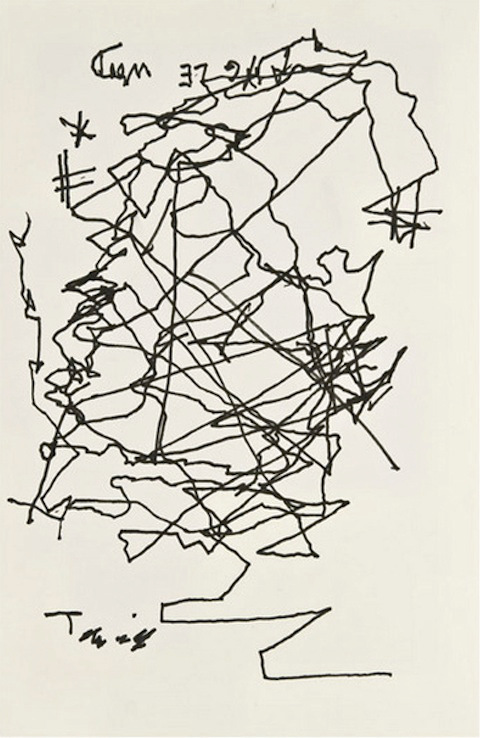What is dramatic are those who suddenly
lose their sight. In my case, that slow nightfall, that slow loss of
sight, began when I began to see. It has continued since 1899 [the year
of his birth] without dramatic moments, a slow nightfall that has lasted
more than three quarters of a century. In 1955, the pathetic moment
came when I knew I had lost my sight, my reader’s and writer’s sight.
Borges called his own blindness “modest, because it is total
blindness in one eye, but only partial in the other.” He could still see
blue, green, and yellow, but not red or black. Yes, black. Shakespeare
was wrong, Borges explained, when he wrote “Looking on darkness which
the blind do see.”
One of the colors that the blind—or at least this blind man—do not see is black; another is red. Le rouge et le noir are
the colors denied us. I, who was accustomed to sleeping in total
darkness, was bothered for a long time at having to sleep in this world
of mist, in the greenish or bluish mist, vaguely luminous, which is the
world of the blind. I wanted to lie down in darkness. The world of the
blind is not the night that people imagine.
This lecture on blindness also includes
one of Borges’s most oft-quoted quips: “I had always imagined Paradise
as a kind of library.” Usually, this is quoted without surrounding
context: he is writing about the irony of being appointed director of
the National Library of Argentina, in 1955, at the very end of his
eyesight, and therefore basically unable to read, though he was still
writing. “There I was,” he writes, “the center, in a way, of nine
hundred thousand books in various languages, but I found I could barely
make out the title pages and the spines.”It was 20 years after this appointment, and after his final descent into near-blindness, that Borges drew this self-portrait for Burt Britton in the basement of the Strand in New York City. In the 1970s, Britton collected over 500 self-portraits of literary luminaries, first insisting they were only for his “private mania,” but later collecting them into a book, Self-Portrait: Book People Picture Themselves. According to Britton, Borges drew this self-portrait “using one finger to guide the pen he was holding with his other hand.”
“His translator brought him in,” Britton told The New York Times. “The portrait is perfect, but what I most remember was escorting him upstairs to the main floor, where it became clear he was listening to the room, the stacks, the books, and him telling me, ‘You have as many books as we have in our national library.'”
You usually see Borges’s self-portrait this way:
 .... [mehr] https://lithub.com/the-self-portrait-jorge-luis-borges-drew-after-going-blind/
.... [mehr] https://lithub.com/the-self-portrait-jorge-luis-borges-drew-after-going-blind/
Keine Kommentare:
Kommentar veröffentlichen